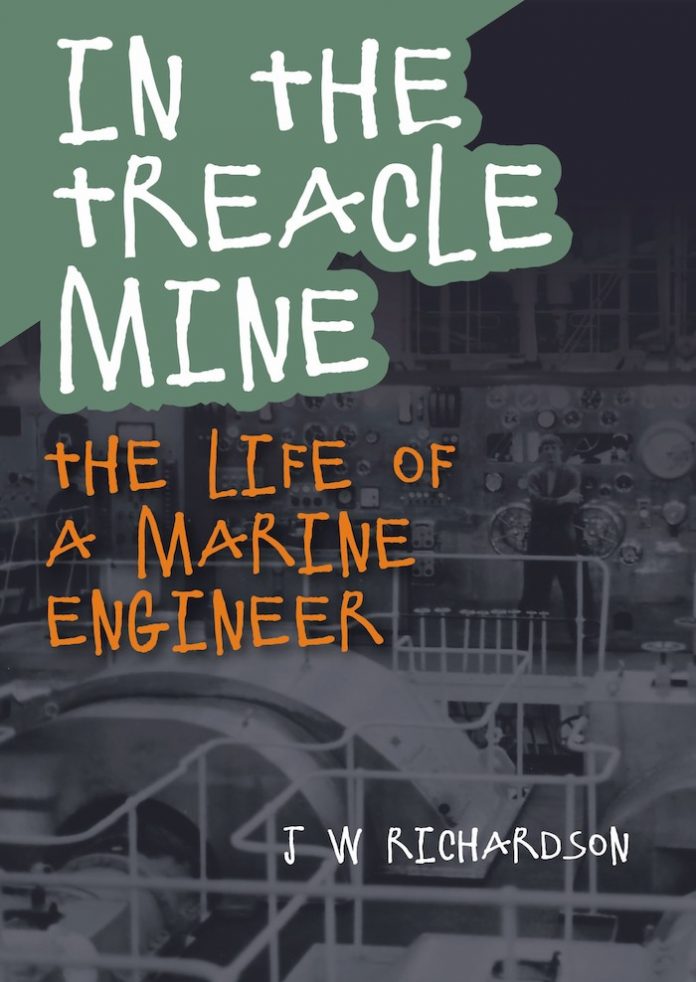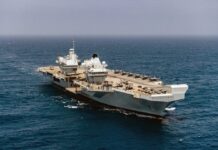
In the Treacle Mine; The Life of a Marine Engineer. By J W Richardson. Whittles Publishing, Dunbeath, Caithness, Scotland 2021
Reviewed by Tim Coyle
‘The Treacle Mine’ was the term applied to ships’ steam engineering spaces by Geordie marine engineers, referring to the heavy bunkering oil burnt in the boilers. The book profiles John Richardson’s career as a marine engineer in the declining years of steam in the merchant marine and the transition to diesels.
Having worked on steam-powered tankers in the 1960s, he transitioned through early container ships to roll-on/roll-off ferries, with an occasional excursion to dredgers and a sludge carrier, ending his sea-going careers on high-speed cross-channel catamarans; a total of 37 vessels.
Books on the merchant marine are rare; even rarer are those by marine engineers. This is an informal autobiography spanning Richardson’s indifferent school performance, his marine engineering training in a dilapidated college in the depressed East End of London in the mid-1960s through the often-cantankerous steam engine rooms as a cadet engineer and gradually working his way to a Certificate of Competency, First Class Engineer, Steamship and Motorship.
Joining the tanker Esso Yorkshire, the cadet engineer found living conditions on board very good with comfortable cabins, excellent food and good pay. They also had well-stocked bars and Richardson notes some engineers could come on duty in the engine room nursing hangovers. As a junior he hardly ever saw chief engineers in the engine room, supervision being exercised by the second engineers. Many of these chiefs were veterans of World War 2 working out their final years and seemed ineffective. Hauled before the chief engineer of Esso Yorkshire by Richardson’s nemesis, second engineer ‘JW’, for a technical misdemeanour the chief was drunk in his cabin; his response to the charge was an invitation to have a drink. On the other hand, the horrendous heat of the tropics and seemingly constant attention required to faulty pipes and connections led the engineers to gratefully down (several) cold beers after coming off watch.
As this is an engineer’s story, the reader should expect some narrative of what challenges were met in the ‘Treacle Mine’ and what it was like operating the steam and diesel plants. And indeed, we don the boiler suit and get down and dirty with Richardson in the engine room as he battles faulty evaporators, condensers, crawling through boilers and many other engineering nightmares. Seemingly the ship’s staff had to rectify poorly manufactured and installed pipework in extreme temperatures. Richardson provides a Glossary and Abbreviations of the engineering terminology to assist the technically unschooled. However, a careful reading of the detail of operations and rectifications at sea is necessary to follow the action. Skimming over the technical details devalues the intensity of the narrative as the whole purpose of the book is to explain what it was like to work in steamship engine rooms and later in diesel plants. It gives a comprehensive overview of how the marine engineers plied his trade in the last quarter of the 20th century.
When not up to his elbows in ‘treacle’ Richardson enjoyed the life at sea on world-wide sailings. He describes the range of ports visited – from the austere Gulf oil terminals to the big cities in Europe, the US and Australia. He married and his wife accompanied him on the voyages in relatively comfortable cabins, enjoying shipboard fellowship and high culinary standards.
Richardson moved from ocean-going ships to cross-channel ro-ro ferries in the mid-1970s and provides a most interesting study of the companies and operations of these vessels. Ending his marine engineering career on the fast Seacat catamarans, he describes the engineering operating challenges of these Australian-designed Incat vessels.
Richardson interposes many other aspects of his life, including his interests in cars and steam railways. He wanted to be a steam locomotive driver as a boy but when he left school steam had gone from the British railway system, so the next best thing was steam at sea.
In the Treacle Mine is a nostalgic romp through the past for former marine engineers, who will likely relive their most treasured emergencies. The younger generation, particularly those raised on gas turbines, should realise how lucky they are. Upper deck elites should be grateful for the light, power and air conditioning they enjoyed on board and, for the interested layperson, it’s a great story.



